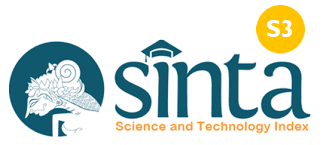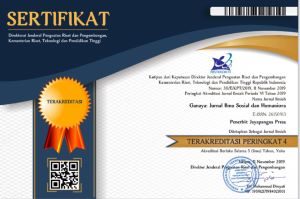Pelaksanaan Model Pembelajaran Kooperatif Tipe Jigsaw Untuk Meningkatkan Hasil Belajar Matematika Siswa Kelas VI SDN 1 Pesedahan
Keywords:
Implementation of Jigsaw Type Cooperative Learning Model, Learning OutcomesAbstract
This research is a classroom action research based on the problem of mathematics results in class VI SD Negeri 1 Pesedahan. Class VI which has 22 students who are subject to Mathematics subjects shows incompleteness in classical learning. From the pre-cycle data obtained an average value of 50.00 with a learning completeness of 32% which is very low compared to the KKM SDN 1 Pesedahan which has been set at 55 with a learning completeness value of 85%. From the data above, it can be identified problems including students feeling afraid of mathematics, students not being motivated to learn, teaching aids used are not motivating to learn, the approach used is not in accordance with the standard and the examples of questions presented are not contextual. Seeing this fact, the researchers tried to make learning improvements according to the CAR title taken, namely the implementation of the jigsaw type cooperative learning model to improve mathematics learning outcomes for class VI SDN 1 Pesedahan semester II Academic Year 2017/2018. For this study, the authors chose the action research design presented by Mc. Kernan which consists of 2 cycles. Based on the results of data analysis and discussion of this research, the following conclusions can be drawn: The use of the jigsaw type cooperative learning model can improve the Mathematics learning outcomes of students in grade VI SD N 1 Pesedahan which can be seen from the learning outcomes of the pre-cycle, cycle I and cycle II as follows: 1) The pre-cycle average score is 50.00 and the percentage of completeness is 32%. This is due to the fact that the appropriate learning model has not been used. Obtaining the value of the first cycle, namely the average value of 53.86, completeness of 50%. This is due to the use of a jigsaw cooperative learning model. 2) The average value of Cycle II is 69.55 completeness, which is 91%. This is because the material has been given using the jigsaw type cooperative learning model appropriately.
References
Agung, A.A Gede. (1999) Metodelogi Penelitian Pendidikan Suatu Pengantar. Singaraja: Fakultas Ilmu Pendidikan UNDHIKSA
Nasution. (1982). Didaktik Asas-asas Mengajar. Bandung: Janmer.
Nasution, S. 1982. Berbagai Pendekatan dalam Proses Belajar Mengajar. Bandung : Bumi Aksara.
Nurkencana, W. dan Sunartana. (1992). Evaluasi Hasil Belajar.Surabaya. Usaha Nasional
Sardiman, AM. (1986). Intraksi Belajar Mengajar dan Motivasi. Jakarta: Rajawali
Sudiatmika, I W. (2004). Penerapan Pendekatan Kontekstual dengan Model
Pembelajaran Langsung dalam Kalor sebagai Upaya Peningkatan Aktivitas dan Hasil belajar Siswa Kelas II A SMP Negeri 3 Singaraja
Sugiarto. (2005). Matematika Sekolah II. Semarang: FMIPA Universitas Negeri Semarang.
Sugiarto dan Isti Hidayah. (2004). Workshop Pendidikan Matematika. Semarang: FMIPA Universitas Negeri Semarang.
Sujana, N. (2005). Dasar-Dasar Proses Belajar Mengajar. Bandung: Sinar Baru Algensindo
Suyitno, A. (2004). Matematika Sekolah I. Semarang: FMIPA Universitas Negeri Semarang.
Suyitno, A. (2005). Pendidikan Matematika I. Semarang: FMIPA Universitas Negeri Semarang.
Downloads
Published
How to Cite
Issue
Section
License
An author who publishes in the Cetta : Jurnal Ilmu Pendidikan agrees to the following terms:
- Author retains the copyright and grants the journal the right of first publication of the work simultaneously licensed under the Creative Commons Attribution-ShareAlike 4.0 License that allows others to share the work with an acknowledgement of the work's authorship and initial publication in this journal
- Author is able to enter into separate, additional contractual arrangements for the non-exclusive distribution of the journal's published version of the work (e.g., post it to an institutional repository or publish it in a book) with the acknowledgement of its initial publication in this journal.
- Author is permitted and encouraged to post his/her work online (e.g., in institutional repositories or on their website) prior to and during the submission process, as it can lead to productive exchanges, as well as earlier and greater citation of the published work (See The Effect of Open Access).
Read more about the Creative Commons Attribution-ShareAlike 4.0 Licence here: https://creativecommons.org/licenses/by-sa/4.0/.





